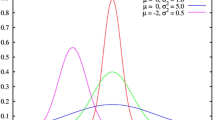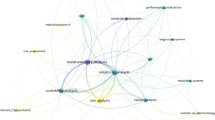Abstract
Operational environments may have a considerable influence on the reliability performance and maintainability performance of an item. In the Arctic region with harsh climate condition, sensitive environment and remote location, these influences are more critical. To achieve effective reliability and maintainability analysis and management, all technical challenges and influence factors must be identified. Then, based on the way that these factors influence the failure mechanisms, maintenance processes and other support activities, appropriate statistical approaches must be selected to quantify their effects. The first part of this paper reviews the technical challenges for the offshore oil and gas industry from the reliability and maintainability performance perspective in the Arctic region. The second part of this paper reviews the available appropriate statistical approach for reliability and maintainability performance analysis under Arctic conditions.









Similar content being viewed by others
References
Ansell JI, Philips MJ (1997) Practical aspects of modelling of repairable systems data using proportional hazards models. Reliab Eng Syst Safe 58(2):165–171
Barabadi A, Barabady J, Markeset T (2010) Application of accelerated failure model for the oil and gas industry in Arctic. In: The IEEE International Conference on Industrial Engineering and Engineering Management (IEEM2010). Macao, December 7–10th, 2010
Barabadi A, Barabady J, Markeset T (2011a) Uncertainty analysis of system reliability assessment under Arctic conditions. In: The Proceedings of Condition Monitoring and Diagnostic Engineering Management (COMADEM2011). May 30–June 1st, Stavanger, Norway
Barabadi A, Barabady J, Markeset T (2011b) Maintainability analysis considering time dependent and time independent covariates. Reliab Eng Syst Safe 96(1):210–217
Barabady J, Kumar U (2008) Reliability analysis of mining equipment: a case study of crushing plant at Jajarm Bauxite mine. Reliab Eng Syst Safe 93(4):647–653
Barabady J, Markeset T, Kumar U (2010) A framework for improvement of production plant performance using production assurance programs. Int J Syst Assur Eng Manag 1(1):59–65
Bea R, Holdsworth R, Smith C (1997) Human and organizational factors in the safety of offshore platforms. In: Bea RG, Holdsworth RD, Smith C (eds) 1996 international workshop on human factors in offshore operations. American Bureau of Shipping, New York
Birolini A (2007) Reliability engineering: theory and practice. Springer, Berlin
Blanchard BS, Verma D, Peterson EL (1995) Maintainability: a key to effective serviceability and maintenance management. Wiley, New York
Blischke RW, Murthy DNP (2000) Reliability modelling, prediction, and optimization. Wiley, New York
Cox DR (1972) Regression models and life-tables. J R Stat Soc 34(2):187–220
Diemand D, Lever HJ (2004) Cold regions issues for off-road autonomous vehicles. US Army Corps of Engineers Engineer Research and Development Center, USA
Elevli S, Uzgoren N, Taksuk M (2008) Maintainability analysis of mechanical systems of electric cable shovels. J Sci Ind Res 67(4):267–271
Freitag DR, McFadden T (1997) Introduction to cold region engineering. ASCE Press, New York
Gao X, Markeset T (2007) Design for production assurance considering influence factors. In: Proceedings of the European Safety and Reliability Conference (ESREL2007), ISBN 978-0-415-44786-7, Stavanger, Norway, 25–27 June 2007
Gao X, Barabady J, Markeset T (2010) An approach for prediction of petroleum production facility performance considering Arctic influence factors. Reliab Eng Syst Safe 95(8):837–846
Ghodrati B, Kumar U (2005a) Operating environment based spare part forecasting and logistics: a case study. Int J Logist Res Appl 8(2):95–105
Ghodrati B, Kumar U (2005b) Reliability and operating environment-based spare parts estimation approach: a case study in Kiruna Mine, Sweden. J Qual Maint Eng 11(2):169–184
Gudmestad OT, Strass P (1994) Technological challenges for hydrocarbon production in the Barents Sea. J Power Technol Eng (formerly Hydro Technical Construction) 28(8):460–471
Gudmestad OT, Zolothukhin AB, Ermakov AI, Jacobsen RA, Michtchenko IT, Vovk VS, Løset S, Shkinek KN (1999) Basic of offshore petroleum engineering and development of marine facilities with emphasis on the Arctic offshore. ISBN 5-7246-0100-1
Gudmestad OT, Alhimenko AI, Løset S, Shkhinek KN, Tørum A, Jensen A (2007) Engineering aspects related to Arctic offshore developments. LAN Publishing House, St. Petersburg
Hasle JR, Kjellén U, Haugerud O (2009) Decision on oil and gas exploration in an Arctic area: case study from the Norwegian Barents Sea. Saf Sci 47(6):832–842
International Electrotechnical Vocabulary (IEV) 191 (2007) Chapter 191: dependability and quality of service. [Online]. Available at: http://std.iec.ch/iec60050. Accessed 10 January 2011
ISO 20815 (2008) Petroleum, petrochemical and natural gas industries production assurance and reliability management. Switzerland
Jones JV (2006) Supportability engineering handbook: implementation, measurement and management. McGraw Hill, New York
Jozwiak JI (1997) An introduction to the studies of reliability of systems using the Weibull proportional hazards model. Microelectron Reliab 37(6):915–918
Kalbfleisch JD, Prentice RL (2002) The statistical analysis of failure time data. Wiley, Hoboken
Kim JW, Yun WY, Dohi T (2003) Estimating the mixture of proportional hazards model with incomplete failure data. J Qual Maint Eng 9(3):265–278
Kimura M (1999) Field and temperature acceleration model for time-dependent dielectric breakdown. IEEE Trans Electron Devices 46(1):220–229
Kleinbaum DG, Klein M (2005) Survival analysis—a self-learning text, 2nd edn. Springer, New York
Kumar D (1995) Proportional hazards modelling of repairable systems. Qual Reliab Eng Int 11(5):361–369
Kumar D, Klefsjo B (1994) Proportional hazards model: a review. Reliab Eng Syst Safe 44(2):177–188
Kumar D, Westberg U (1997) Some reliability models for analysing the effects of operating conditions. Int J Reliab Qual Safe Eng 4(2):133–148
Kumar R, Barabady J, Markeset T (2009) Improvement of performance of oil and gas production facility in Arctic by applying human factors/ergonomic principles in the design phase. In: The Proceedings of the 20th International Conference on Port and Ocean Engineering under Arctic Conditions (POAC2009). June 9–12th, Luleå, Sweden
Kumar R, Markeset T, Barabady J, Kumar U (2011) Ergonomic Issues at a Railway Maintenance Workshop. In: The Proceedings of Condition Monitoring and Diagnostic Engineering Management (COMADEM2011). May 30–June 1st, Stavanger, Norway
Larsen A, Markeset T (2007) Mapping of operations, maintenance and support design factors in Arctic environments. In: Aven T, Vinnem JE (eds) Risk, reliability and societal safety. Taylor and Francis Group, London, pp 2463–2470
Le May I, Deckker E (2009) Reducing the risk of failure by better training and education. Eng Fail Anal 16(4):1153–1162
Linné A, Juntti U (2011) Improving conditions for personnel performing condition-based maintenance on infrastructure by measuring/monitoring their winter performance ability. In: The Proceedings of Condition Monitoring and Diagnostic Engineering Management (COMADEM2011), May 30–June 1st, Stavanger, Norway
Lloyd DF, Line DY (1999) Time-dependent covariates in the Cox proportional-hazards regression model. Annu Rev Public Health 20:145–157
Løset S (1995) Science and technology for exploitation of oil and gas: an environment challenge. In: European Networking Conference on Research in the North. Svalbard, Sep. 12–16th, 1995
Løset S, Shkhinek KN, Gudmestad OT, Høyland KV (2006) Actions from ice on Arctic offshore and coastal structures. LAN Publishing, St. Petersburg
Love CE, Guo R (1991) Using proportional hazard modelling in plant maintenance. Qual Reliab Eng Int 7:7–17
Makinen TM, Palinkas LA, Reeves DL, Paakkonen T, Rintamaki H, Leppaluoto J, Hassi J (2006) Effect of repeated exposures to cold on cognitive performance in humans. Physiol Behav 87:166–176
Markeset T (2008a) Design for high performance assurance for offshore production facilities in remote harsh and sensitive environment. Quart J Oper Res Soc India (OPSEARCH) 45(3):189–208
Markeset T (2008b) Design for petroleum production performance in Arctic locations considering maintenance and support services. In: The Proceedings of the Mine Planning and Equipment Selection Conference (MPES2008). October 20–22nd, Beijing, China
Markeset T (2010) Design for performance: review of current research in Norway. In: The Proceedings of Condition Monitoring and Diagnostic Engineering Management (COMADEM2010). June 28–July 2nd, Nara, Japan
Marshall AW, Olkin I (2007) Life distributions: structure of nonparametric, semiparametric, and parametric families. Springer, New York
Meeker WQ, Escobar LA (2006) A review of accelerated test models. Stat Sci 21(4):552–577
Nelson W (1990) Accelerated testing: statistical models, test plans, and data analysis accelerated testing. Wiley, New York
OPL (1991) An introduction to offshore maintenance. Oilfield Publications, Incorporated, Ledbury
OREDA (2002) Offshore reliability data, 4th edn. Sintef Industrial Management, Trondheim, Norway: distributed by Det Norske Veritas (DNV)
Panesar SS, Markeset T (2006) Maintenance optimization process in the Norwegian petroleum industry—key issues, challenges, and opportunities. In: The Proceedings of Condition Monitoring and Diagnostic Engineering Management (COMADEM2006). ISBN 978-91-631-8806-0, June 11–15th, Luleå, Sweden
Rausand M, Høyland A (2003) System reliability theory: models, statistical methods and applications, 3rd edn. Wiley-IEEE, New York
ReliaSoft (2007) System analysis reference reliability, availability and optimization. [ebook], USA: ReliaSoft Publishing. Available at: http://www.reliasoft.com/. Accessed 20 January 2011
Richard K, Nelson K (2002) On the use of the accelerated failure time model as an alternative to the proportional hazards model in the treatment of time to event data: a case study in influenza. Drug Inform J 36(3):571–579
Roy SK, Bhattacharyya MM, Naikan VNA (2001) Maintainability and reliability analysis of a fleet of shovels. Mining Technol: IMM Trans A 110(3):163–171
Ryerson CC (2008) Assessment of superstructure ice protection as applied to offshore oil operations safety problems, hazards, needs, and potential transfer technologies. US Army Corps of Engineers Engineer Research and Development Center, USA
Schemper M (1992) Cox analysis of survival data with non-proportional hazard functions. J R Stat Soc D (The Statistician) 41(4):455–465
Tjiparuro Z, Thompson G (2004) Review of maintainability design principles and their application to conceptual design. J Process Mech Eng 218(2):103–113
Tsai YT, Wang KS, Teng HY (2001) Optimizing preventive maintenance for mechanical components using genetic algorithms original. Reliab Eng Syst Safety 74(1):89–97
Tsarouhas PH, Arvanitoyannis IS, Ampatzis ZD (2009) A case study of investigating reliability and maintainability in a Greek juice bottling medium size enterprise. J Food Eng 95(3):479–488
Vlok PJ, Coetzee JL, Banjevic D, Jardine AKS, Makis V (2002) Optimal component replacement decisions using vibration monitoring and the proportional-hazards model. J Oper Res Soc 53(2):193–202
Wang F, Li C, Lv Y, Lv F, Du Y (2010) Ice accretion on superhydrophobic aluminum surfaces under low temperature conditions. Cold Reg Sci Technol 62(1):29–33
Wani MF, Gandhi OP (1999) Development of maintainability index for mechanical systems. Reliab Eng Syst Safe 20(5):1189–1201
Author information
Authors and Affiliations
Corresponding author
Rights and permissions
About this article
Cite this article
Barabadi, A., Markeset, T. Reliability and maintainability performance under Arctic conditions. Int J Syst Assur Eng Manag 2, 205–217 (2011). https://doi.org/10.1007/s13198-011-0071-8
Received:
Revised:
Published:
Issue Date:
DOI: https://doi.org/10.1007/s13198-011-0071-8




